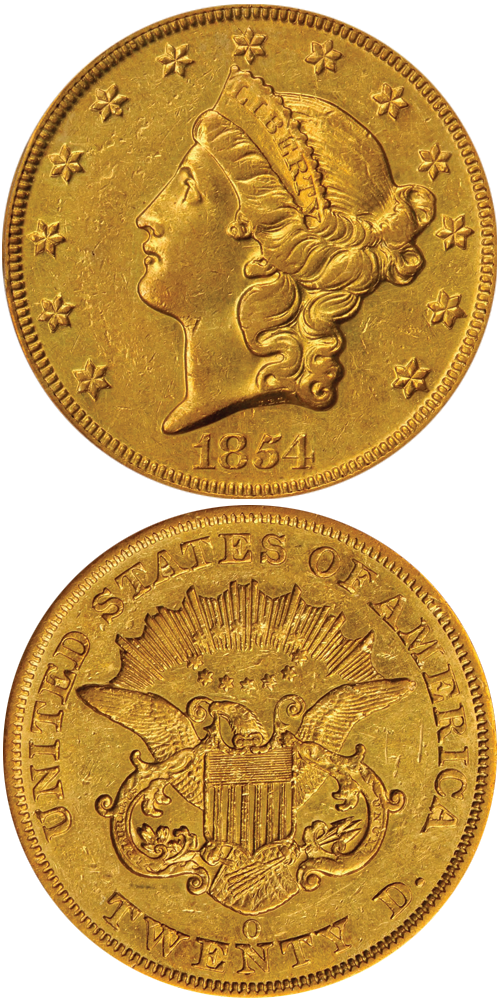1854-O Liberty Head Double Eagle
The New Orleans Mint was the only Southern mint to produce the double eagle and only did so in modest quantities using gold provided from the vast California gold fields. While the vast quantities of gold that flowed east from California provided the bullion for double eagle coinage at both the Philadelphia and New Orleans mints, the majority of this precious metal found its way to the Northeast rather than the Deep South. This trend began in 1850, the year that regular issue double eagle production commenced, and continued throughout the early New Orleans Mint double eagle series that ended in 1861. The limited supply of bullion reaching the New Orleans Mint became particularly acute after 1853, the commencement of coinage operations at the San Francisco Mint in 1854 allowing for much of the newly mined gold to be struck into double eagles before even leaving California.
Perhaps not surprisingly, double eagle production at the New Orleans Mint reached its lowest point since the beginning of the series in 1854 with just 3,250 coins struck. Since there was no contemporary numismatic interest in this issue (or any other mintmarked U.S. gold coins, for that matter), the distribution of the 1854-O is the same as that of the 1850 to 1853 New Orleans Mint deliveries, the coins seeing extensive domestic circulation in the South and west of the Mississippi River beginning in the year of issue. Some worn examples were likely included in international transactions of later years, but with so few coins produced to begin with the numbers were understandably limited. Q. David Bowers, in his 2004 Guide Book of Double Eagles published by Whitman, accounts for only 25 to 30 survivors in all grades and describes the 1854-O as "one of the rarest of all double eagles." Douglas A. Winter (Gold Coins of the New Orleans Mint: 1839-1909, 2018 edition) takes a slightly more liberal view with an estimate of 30 to 40 coins extant, although he still ranks the 1854-O as the leading rarity among New Orleans Mint twenties.
The example to the left was sold by Stack's Bowers Galleries in August 2010 as part of the Rarities Night Auction, where it realized $488,750. It is pedigreed to the Horseshoe Collection.






